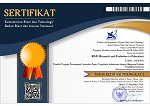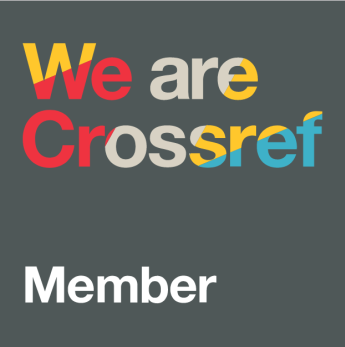Improving students' mastery on automotive electrical system using automotive electrical multimedia
DOI:
https://doi.org/10.21831/reid.v2i1.8219Keywords:
automotive electrical system, multimediaAbstract
References
Afolabi, A.K., Abidoye, J.A., & Afolabi, A.F. (2012). Effect of instructional media on the academic achievement of students in social studies in junior second-ary schools. PNLA Quarterly, 77, 1-7.
AlSultan, S., Lim, H.S., MatJafri, M. Z., & Abdullah, K. (2006). Developement of a computer aided instruction (CAI) package in remote sensing education. International Archives of the Photogrammetry, Remote Sensing and Spatial Information Science, 34, 29-33.
Arkorful, V. & Abaidoo, N. (2014). The role of e-learning, the advantages and disadvantages of its adoption in higher education. International Journal of Education and Research, 2(2), 397-410.
Azwar, S. (2003). Tes prestasi: Fungsi dan pengembangan pengukuran prestasi belajar (2nd ed.) [Achievement test: Function and development of learning achievement measurement (2nd ed.)]. Yogya-karta: Pustaka Pelajar.
Borg, W.R. & Gall, M.D. (1989). Educational research: An introduction (5th ed.). New York, NY: Pearson Education.
Deniz, H. & Cakir, H. (2006). Design principles for computer-assisted instruction in histology education: An exploratory study. Journal of Science Education and Technology. doi: 10.1007/s10956-006-9031-5, 1-10.
Eristi, S.D. (2008). The effectiveness of interactive instruction CD designed through the pre-school students. Journal of Theoretical and Applied Information Technology, 5, 832-839.
Frey, B.A. & Sutton, J.M. (2010). A model for developing multimedia learning projects. MERLOT Journal of Online Learning and Teaching, 6, 491-507.
Garrand, T. (2006). Writing for multimedia and the web: A practical guide to content development for interactive media. Amsterdam: Elsevier.
Ivers, K.S. & Barron, A.E. (2002). Multimedia projects in education designing, producing, and assessing (2nd ed.). Connecticut, CT: Teacher Ideas Press, a division of Greenwood.
Kayri, I., Gení§oglu, M.T., & Kayri, M. (2012). The computer assisted education and its effects on the academic success of students in the lighting technique and indoor installation project course. International Journal of Advances in Engineering & Technology, 2, 51-61.
Leow, F.T. & Neo, M. (2014). Interactive multimedia learning: Innovating classroom education in a Malaysian university. TOJET: The Turkish Online Journal of Educational Technology . 13, 2, 99-110.
Lu, C.H. & Cheng, S.F. (2012). Applying computer-based technology to instruction for the effectiveness of teaching and learning. ARPN Journal of Science and Technology, 2(10), 1013-1017.
Nazimuddin, S.K. (2014). Computer assisted instruction (CAI): A new approach in the field of education. International Journal of Scientific Engineering and Research (IJSER), 3(7), 185-188.
Ragasa, C.Y. (2008). A comparison of computer-assisted instruction and the traditional method of teaching basic statistics. Journal of Statistics Education, 6(1), 1-10.
Reddi, U.V. & Mishra, S. (2003). Educational multimedia: A handbook for teacher-developers. New Delhi: The commonwealth of Learning, Commonwealth Educational Media Centre for Asia.
Reeves, T.C. (1998). The impact of media and technology in schools. A research report which is prepared for The Bertelsmann Foundation. University of Georgia.
Rosa, M.C. & Preethi, C. (2012). Effectiveness of multimedia instructional pack-age for teaching marketing management among higher secondary school students. Education India Journal: A Quarterly Refereed Journal of Dialogues on Education, 1, 1-12.
Rosenberg, H., Grad, H.A., & Matear, D.W. (2003). The effectiveness of computer-aided, self-instructional programs in dental education: A systematic review of the literature. Journal of Dental Education, 67, 524-532.
Schittek, M., Mattheos, N., Lyon, H.C., & Attstrí¶m, R. (2001). Computer assisted learning: A review. European Journal of Dental Education, 5, 93–100.
Sidhu, M.S. (2010). Technology-assisted problem solving for engineering education: Interactive multimedia applications. New York, NY: Engineering Science Reference.
Simkins, M., Cole, K., Tavalin, F., & Means, B. (2002). Increasing student learning through multimedia projects. Alexandria, VA: Association for Supervision and Curriculum Development.
Stemler, L.K. (1997). Educational characteristics of multimedia: A literature review. Journal of Educational Multimedia and Hypermedia, 6, 339-359.
Widjanarko, D. & Abdurrahman. (2006). Peningkatan kemampuan menganalisis kerja sistem kelistrikan mobil dengan tugas model uraian terbatas [Development of analyzing ability of car electrical working system by employing restricted response task model]. Jurnal Pendidikan Teknik Mesin, 6, 59-64.
Downloads
Published
How to Cite
Issue
Section
Citation Check
License
The authors submitting a manuscript to this journal agree that, if accepted for publication, copyright publishing of the submission shall be assigned to REID (Research and Evaluation in Education). However, even though the journal asks for a copyright transfer, the authors retain (or are granted back) significant scholarly rights.
The copyright transfer agreement form can be downloaded here: [REID Copyright Transfer Agreement Form]
The copyright form should be signed originally and sent to the Editorial Office through email to reid.ppsuny@uny.ac.id

REID (Research and Evaluation in Education) by http://journal.uny.ac.id/index.php/reid is licensed under a Creative Commons Attribution-ShareAlike 4.0 International License.







.png)





